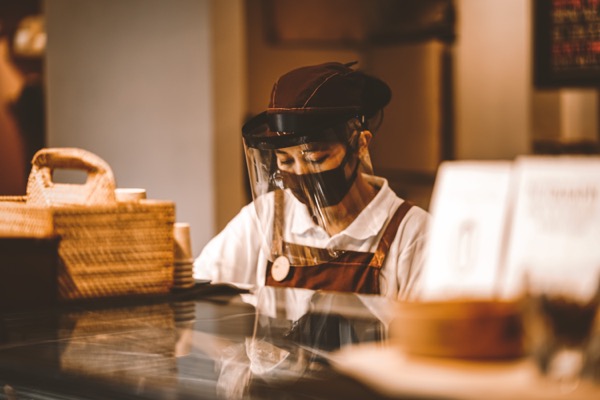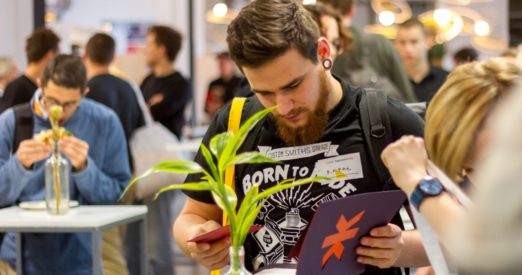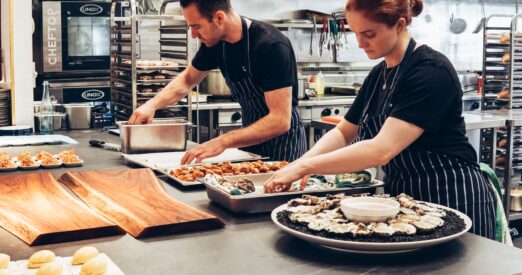
50 Statistics to Know about COVID-19’s Impact on the Hospitality Industry
by Surbhi Kapoor & John Cho
COVID-19 has ushered in an era of tumult, panic, and grief worldwide. The hospitality industry is widely considered to have felt the brunt of the impact. But don’t take our word for it—let the numbers tell the story.
Here, we’ve assembled a timeline of over 50 different statistics from research and surveys conducted across food, beverage, and hotel businesses to paint a picture of just how much has changed across the course of the pandemic.
December 31, 2019
A cluster of pneumonia cases is reported to the World Health Organization by the Wuhan Municipal Health Commission in China. The cause is eventually noted to be from a novel coronavirus, now known as COVID-19.
January-February 2020
The start of the Lunar New Year is dampened by racist assumptions about the origins of COVID-19. Yelp found that searches for Chinese restaurants in this time only increased by 38% compared to the two previous weeks—down from 56% the year prior. In Chicago and Manhattan, there was actually an overall decline in searches for the cuisine.
This trend carried into February: across the first three weeks of the month, daily restaurant “connections” for Chinese restaurants (phone calls, website traffic, delivery orders, reviews, etc.) were down by about 20%.
March 2020
By early March, OpenTable found that every city with more than 50 restaurants on its platform had experienced an overall decline in reservations.
The White House declared a national emergency on March 13.
By March 18, daily restaurant connections were down 54 percent overall.
April 2020
The U.S. Labor Department reports that the national unemployment rate hit 14.7%—an all-time high. The restaurant industry alone saw a loss of 5.5 million jobs in April.
A James Beard Foundation survey of 1400 restaurant owners uncovers some harrowing numbers:
- Respondents laid off 91% of their hourly workforce and nearly 70% of their salaried employees.
- Over a third of respondent restaurants had closed temporarily, or potentially permanently. More than 77% of open restaurants had experienced at least a 50% reduction in sales.
- About two-thirds of respondents were uncertain if takeout and delivery could sustain their restaurants until they could fully reopen.
Consumer sentiment about delivery and takeout was a bit more optimistic. Market research firm AMC Global reported that 33% of consumers were buying more takeout meals than before the pandemic—but only 13% shared that they would still be reliant on the convenience after COVID-19.
A data subscription service found that, by April 15, about 59% of Chinese restaurants nationwide were no longer posting credit or debit transactions—an indicator that they had closed entirely.
May 2020
An analysis of Homebase data found that employment in leisure, hospitality, and retail trades declined by a staggering 60% from February to the end of April. About one-third of the decline is said to be from businesses shutting down.
July 2020
A Carson College of Business at Washington State University analysis of restaurant and hotel customer sentiment finds:
- More than 50% of individuals were unwilling to dine in at a restaurant immediately.
- Similarly, over 50% of individuals were unwilling to travel and stay at a hotel any time soon.
- Only around a quarter of respondents had already dined in a restaurant, and only around a third of them were willing to travel to a destination and stay at a hotel in the next few months.
- A small group of respondents reported that they would only feel comfortable patronizing sit-down restaurants (about 14%) or traveling and staying at a hotel (about 17%) once a COVID-19 vaccine was available.
- About a third of restaurant customers and over 70% of hotel customers reported a belief in the use of technology to help reduce human-to-human contact.
August 2020
Statista reports a 41% year-over-year decline in seated diners across restaurants worldwide.
September 2020
As restrictions across the country have eased, the unemployment rate declines to 7.9%. However, there are still 2.3 million fewer foodservice jobs than there were before COVID.
November 2020
The American Hotel & Lodging Association surveyed 1200 members and found that 71% of their businesses would not be able to last another 6 months without additional government assistance, like expanding the Paycheck Protection Program (PPP) or Main Street Lending Program.
December 2020
One Fair Wage conducted a study of 1700 restaurant employees across five states and the District of Columbia. The vast majority—83%—reported a decline in tips, with two-thirds reporting at least a 50% decrease.
As wages shrank, harassment grew. Forty-one percent of respondents said they had seen a “noticeable change in the number of unwarranted sexual comments” from customers during the pandemic, potentially due to tensions surrounding mask-wearing requirements.
Sandra Lindsay, a New York nurse, is the first American to receive a COVID-19 vaccine.
January 2021
The National Restaurant Association (NRA) published its annual State of the Industry Report:
- Restaurant industry sales in 2020 hit $659 billion—a $240 billion decrease from expected earnings. The NRA projects that sales will grow by 10.2% in 2021, which still won’t get the industry back to pre-pandemic numbers.
- There were about 12.5 million restaurant industry employees by the end of 2020. Employment numbers were projected to be at 15.6 million people.
- An estimated 110,000 restaurants temporarily or permanently closed.
February 2021
A Bluedot survey of over 1500 people found that consumer willingness to wait for a restaurant order dropped from 10 minutes to 6 minutes. Visibly long lines—a mainstay of pandemic culture due to indoor capacity limitations—would lead 77% of customers to leave or consider leaving a restaurant.
After a slow start, vaccinations start to speed up across the country. At this point, 26.5 million vaccinations had been administered—which meant that more Americans had received at least 1 dose of a vaccine than had tested positive for COVID-19.
March 2021
A year after the national emergency declaration, Datassential finds that more than 10% of U.S. restaurants have permanently closed.
But there’s hope: the American Rescue Plan was signed into law, allotting $28.6 billion in relief grants specifically for small restaurants, and the Bureau of Labor Statistics found that restaurants and bars hired more employees than any other industry that month.
June 2021
A survey conducted by Alignable finds that 39% of restaurants can’t afford their June rent. Respondents cited lack of revenue and traffic, labor shortages, and inflation as the leading factors.
About 71% of restaurant owners reported their support to remove the $300 extra unemployment benefit in hopes it would encourage more people to return to the workforce.
July 2021
The Restaurant Revitalization Fund—the grant included as part of American Rescue Plan—is closed early. The grant received more than 370,000 applications, but the fund only had enough to cover less than a third of applications.
Over 2,900 businesses owned by women, people of color, and veterans were promised relief funds, only to have them rescinded in court from lawsuits stating the disbursement was discriminatory against white men.
As of July 9, 48.2% of Americans are fully vaccinated. The hotel industry is still struggling, with the AHLA finding 21 of the top 25 U.S. markets in a depression, but there are indicators that could improve quickly. Traffic through airports is on the rise, as reported by the Transportation Security Administration, and 71% of adults report feeling comfortable dining out again.
Looking Forward
As of publication, the dangerous Delta variant of COVID-19 has led major American metro areas to reinstate mask mandates, even for people who are fully vaccinated. And five clusters of low vaccination rates within the Southeastern U.S. are said to pose a threat to the national population that’s not yet inoculated.
Although recent numbers look promising for the hospitality industry, it would be wise to take them with a grain of salt: the pandemic is still unpredictable. But no matter how the variant plays out, these 50 data points make it clear that food, beverage, and hotels will have a long road to recovery ahead of them.
Stay up to date on the latest news in AP automation and finance
Related

